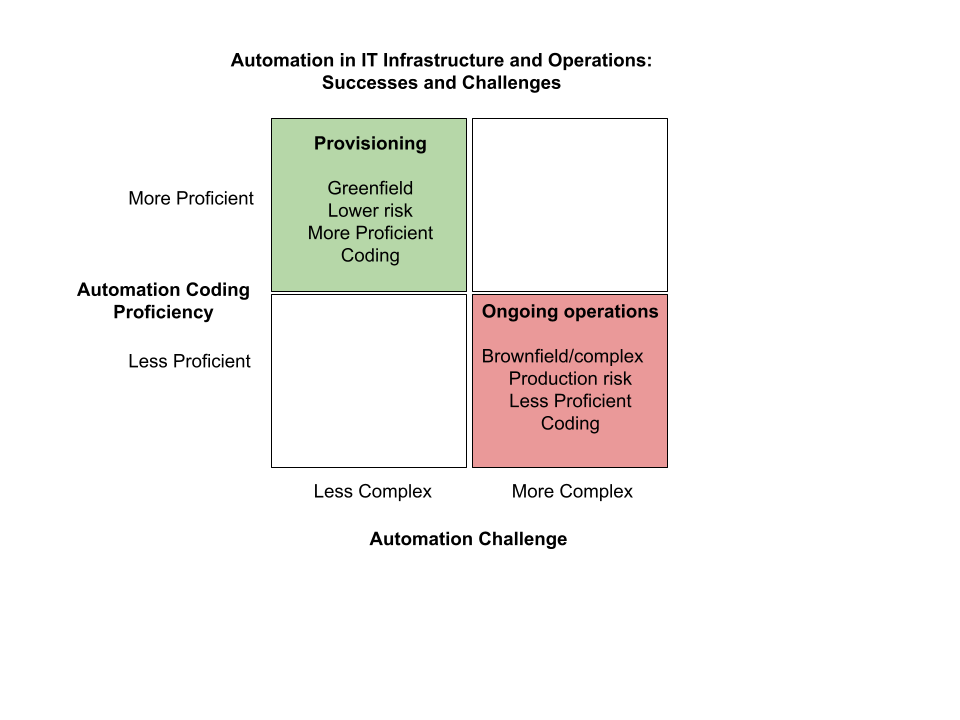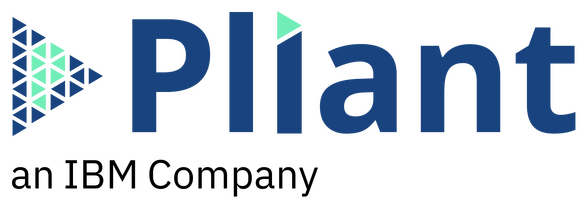After attending two conferences late this year, the Network Automation Forum Conference (AutoCon) and Gartner IOCS, our team has all come to the same conclusion:
There’s a lot left to accomplish in IT infrastructure automation.
To break down our thoughts from this past year, we’re going over the insights we’ve gained from these two conferences, and how we anticipate their impact moving forward into 2024.
Insights from Gartner on IT Infrastructure Automation
In Gartner’s State of Infrastructure and Operations Automation survey, only 21% of I&O leaders reported high levels of success in their automation endeavors. Yet, Infrastructure and Operations leaders are broadly optimistic about the future: 85% of them see more automation in their future.
The brightest spot in automation today is provisioning, particularly for applications and cloud infrastructure. It makes sense, as outlined below:
- Provisioning addresses mostly greenfield environments with known, often standardized configurations. Not having to guess the state of the environment makes writing automation code a lot easier.
- Automating provisioning is also comparatively less risky than automating changes in production environments.
- When automating application deployments, Dev and DevOps teams provide strong coding skills suited for writing good automation code.
- When automating cloud services, automation coders can count on services that are far better abstracted than data center services. That too makes it easier.
The flip side is that automating ongoing operations—particularly in Network, Data Center, and Hybrid Environments—is more challenging and less successful today:
- Production environments are often brownfield: multi-vendor, multi-technology, with uncertain configuration and state, which makes writing automation code challenging.
- Automating changes to production services presents business risks.
Infrastructure and operations teams often lack the coding skill set to produce good automation code. The theme question of AutoCon was “Why haven’t we seen full adoption of network automation, yet?” The primary answer was, “We still struggle to combine the Network Engineering discipline with the coding discipline.” Automation is code…
As an industry analyst recently shared with me, “Cloud and application provisioning is only 10% of the problem, and it’s the easy part. 90% of the problem and the cost is elsewhere.” Here’s what Gartner recommends:
“Automate deployment, but don’t neglect to automate valuable operational opportunities such as change management, vulnerability remediation, and backup and disaster recovery.”

Three Solutions to the Infrastructure and Operations Automation Challenge
So how does IT rise to the challenge? I don’t believe there is a single silver bullet for that. Instead, it’s the combination of new organizational approaches and new technologies that will deliver the progress so many expect.
1. Platform Engineering and the Automation First Mindset
Gartner defines Platform Engineering as “the discipline of building and operating self-service developer platforms for software development and delivery. A platform is a layer of tools, automation, and information maintained as products by a dedicated platform team, designed to support software developers or other engineers by abstracting underlying complexity. The goal of platform engineering is to optimize the developer experience and accelerate delivery of customer value.”
To create this abstraction, Platform Engineers must systematically automate the provisioning and ongoing management of Infrastructure Services (the “Automation First mindset”).
As more IT organizations turn towards this model, they will create groups that will combine engineering disciplines across technical domains as well as coding disciplines. They will also adopt tooling and process standards that will support their work across technical domains. I believe market forces will drive IT Infrastructure and operations organizations to adopt these concepts as they strive to provide their customers with service levels that will compare favorably with the standards set by public cloud providers.
2. The Low-Code, API-first Opportunity
Low-code, API-first automation platforms (like Pliant) are designed to accelerate the coding proficiency of engineers, making coding more accessible to more team members.
They’re also designed to make coding substantially faster. In a low-code, API-first solution, engineers create workflows by dragging and dropping blocks of API functionality onto a canvas. In other words, they can code sophisticated workflows armed only with their knowledge of engineering and their process logic.
Automation platforms also include sophisticated capabilities with RBACs, API gateways, and a portal for Self-Service Apps that make publishing workflows to an organization seamless and secure. Adoption of such platforms will accelerate the progress of automation in IT infrastructure and operations.
3. Generative AI and the Co-Pilot Use Case
No future prediction exercise would be complete in 2023 without a statement that AI will change the world. In the case of Automation, I believe such a statement is well-founded.
Generative AI, with a co-pilot approach, can radically simplify and accelerate the production of automation code by engineers. The aim here is to support the engineer with a service that will automatically generate and propose template workflows based on verbal prompts.
The engineer can then inspect and edit the code—a task made considerably faster and more rewarding by graphical representations of the code, as provided by low-code solutions like Pliant.
I believe 2023 will show the viability of this approach and its impact on accelerating automation.
Final Thoughts
Even though there’s a lot still left to accomplish for IT infrastructure automation, we believe the future is bright. And at Pliant, we’re at the forefront with our cutting-edge, low-code automation solutions.
Our team is looking forward to what next year has in store. With that, I wish you all a Happy New Year and a prosperous 2024.
– Philippe Vincent, CEO, Pliant
